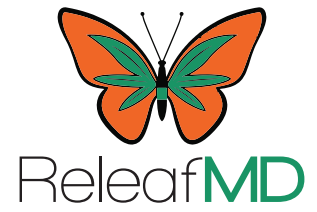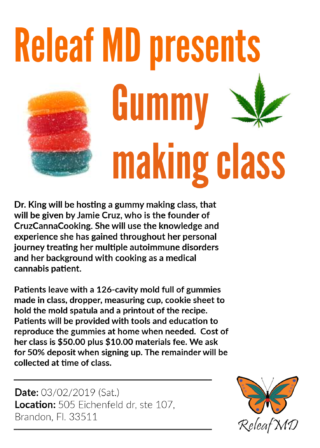BLOG / NEWS
Studies have shown that people struggling with debt are three times more likely to have a mental health disorder. Unfortunately, this means that those with PTSD are not only forced to manage their unique symptoms but are also much more likely to have difficulties managing their finances.
Our guide was created using insight from expert health and finance contributors to help readers with a wide range of mental illnesses balance their financial and mental well-being.
You can view the guide here: https://www.creditcards.com/credit-card-news/mental-health-and-debt.php
If there’s one person who really knows her stuff about medical cannabis, it’s Mara Gordon.
Gordon is the founder of Aunt Zelda’s, an organization that works with medical cannabis patients and offers their own lines of specially formulated cannabis products.
Gordon and the Aunt Zelda’s team are perhaps most famous for the amazing work they have done with cancer patients.
However, tumors aren’t the only thing the Aunt Zelda’s staff treats with cannabis medicines. They also work with medical cannabis patients experiencing chronic pain.
Chronic pain is perhaps the most common ailment that causes patients to seek out medical cannabis recommendations.
In an astounding Green Flower online course, Gordon reveals how the Aunt Zelda’s team uses cannabis to treat chronic pain and teaches viewers how to make the most of their cannabis medicines.
Hoping to improve the efficacy of your cannabis medicines? Here are Gordon’s top seven ways to make cannabis work better for pain.
1. Consume your cannabis medicine with fat
Believe it or not, adding some fat into your diet prior to taking cannabis medicines can drastically improve both the herb’s psychoactive and medicinal effects.
To explain why Gordon recalls a personal anecdote:
“I had some leftover infused oil and I went ahead and basted a chicken with it. Well, I ate the white meat and the other people ate the dark meat and they got high and I didn’t because there’s not as much fat in the white meat as there is in the dark meat.”
While the chicken story is just an example, there is some real science behind Gordon’s experience.
The most famous psychoactive in cannabis, tetrahydrocannabinol (THC), is a lipid. Other cannabinoids, like cannabidiol (CBD), are also lipid molecules.
What’s a lipid? A fat.
According to Gordon, eating fat before partaking in cannabis “…increases the bioavailability of the cannabinoids, because [cannabis] is fat soluble.”
Gordon recommends taking cannabis medicines after munching on something like an avocado or almond butter, which are both healthy sources of fat that are easy to digest.
2. Learn how terpenes interact with your body
There is much more to the cannabis plant than THC and CBD. In fact, it’s well-known that the plant is capable of producing several hundred different molecules.
While cannabinoids like THC and CBD tend to get the major press, the phytochemicals that give each cannabis cultivar its unique scent shouldn’t be overlooked.
These aroma molecules are known as terpenes.
Not only do these compounds provide a remarkable aromatic experience, but they’re also responsible for the nuanced effects of each cannabis strain.
As it turns out, having a knowledge about the terpenes in cannabis may affect your experience with the plant can make or break a quality cannabis medicine.
“If you have a THC product during the day, you’re going to want one that has limonene in it or something like that to make it more uplifting, you’re not going to take in the morning something with myrcene, for example, because then you’re going to feel sluggish from it and that’s something you would take at night.”
Limonene is a terpene aroma molecule that provides a stimulating citrus scent.
Myrcene is a hypnotic and sedative terpene that provides the drowsy and sleepy effects in many common cultivars. Myrcene has a musky aroma and is also found in hops.
“Always ask to see the lab results,” says Gordon, regarding tested cannabis products. “And then you have to learn how certain terpenes interact with your body and then once you know that just try to repeat it.”
3. Use topicals
Topicals are oft under-appreciated cannabis products. Cannabis topicals are infused balms, creams, oils, lotions, and any other product intended for external use.
While a topical may not be the end-all solution to chronic pain management, they certainly do have a way of easing surface pains, inflammation, and perhaps even stiff muscles.
Topicals are an excellent addition to pain management treatments, as they help to provide surface-level relief.
Most cannabis medicines are either ingested or inhaled, so topical cannabis offers a third layer of pain management that many medical cannabis patients find helpful.
“When you’re dealing with that deep, deep nerve pain, a topical is not going to touch it. But, in many, many cases, you have associated tense muscles because you tend to hold your body in a certain way when you’re suffering in pain. You cause all sorts of problems, and there’s a lot of nerves that are at the surface area.”
“If you use a topical in those situations,” explains Gordon, “then you’re going to have focused relief without any of the psychoactivity.”
4. Pick healthy products
Sadly to say, not all cannabis products are created equal.
“Make sure that you pick very healthy products,” says Gordon, “so you’re doing this with something that you’re not doing any harm to your body at the same time.”
While the standard budtender might sell you a joint or a brownie, these products don’t make for the best cannabis medicines.
They may be fun and somewhat relieving, however, both of these products also contain elements that detract from health rather than encourage wellness.
While cannabis has not been conclusively linked to lung cancer, smoke from joints contain many carcinogenic compounds that can be irritating to the tissues of the lungs.
The popular brownie, while delicious, is also made out of two of the most inflammation-causing foods: sugar and refined flour.
Similarly, many vaporizer pens contain thinning agents like propylene glycol and polyethylene glycol. When heated to high temperatures, research has shown that these compounds can combust into formaldehyde and other carcinogens, potentially causing harm.
5. Start low, go slow
Those with serious pain conditions may need to consume a decent amount of cannabis before they reach an effective dose.
However, starting at the standard effective dose for most pain patients isn’t always a good idea.
Why? Because the effects of the cannabis medicines may be too strong and it increases your chance of negative side effects of the herb.
Negative side effects can include anxiety, nausea, increased pain, and excessive drowsiness.
However, these side effects can be avoided entirely if you give your body enough time to grow accustomed to the new treatment.
When it comes to medical cannabis, the motto “start low, go slow” is important to remember.
“People are always going to start low and move slowly up to a therapeutic dose,” says Gordon.
“But, the reality is that when you start out at five milligrams or three milligrams that’s not going to keep you asleep for very long. That’s going to make you feel high, potentially, and only for a very short period of time before you need more.”
“When you get to 15 to 25 milligrams,” she continues, “that seems to be a sweet spot where people can stay for years, at that point, and not have to keep going up on it.”
6. Avoid sugar, gluten, and inflammatory foods
Cannabis medicines work best when they’re also accompanied by meaningful lifestyle changes.
Perhaps one of the most important lifestyle changes to include while on a medical cannabis regimen is an anti-inflammatory meal plan.
Certain processed foods, refined sugars, and gluten-containing foods can increase inflammation, potentially increasing pain and detracting from the effectiveness of medical cannabis.
“Getting up and moving, stretching, eating healthy, making sure you stay away from wheat, sugar, and things that cause inflammation in the body,” are all habits that should be included alongside a medical cannabis regimen.
“I think people have to be aware that it’s not like people can take a pill and you can get better. You have to be an active participant in your healing process,” says Gordon.
7. Don’t consume too much
While Gordon’s course discusses many different tactics for using cannabis for chronic pain management, one message she hopes to drive home is that, with this herb, less is more.
“I think the vast majority of people use too much cannabis,” explains Gordon. “It’s not scare, however, I think that there’s a scarcity about it that keeps it at a higher price point for what it is.”
“But, if you can keep the dose down at what it really needs to be, you can save people a lot of money and improve the availability of it.”




